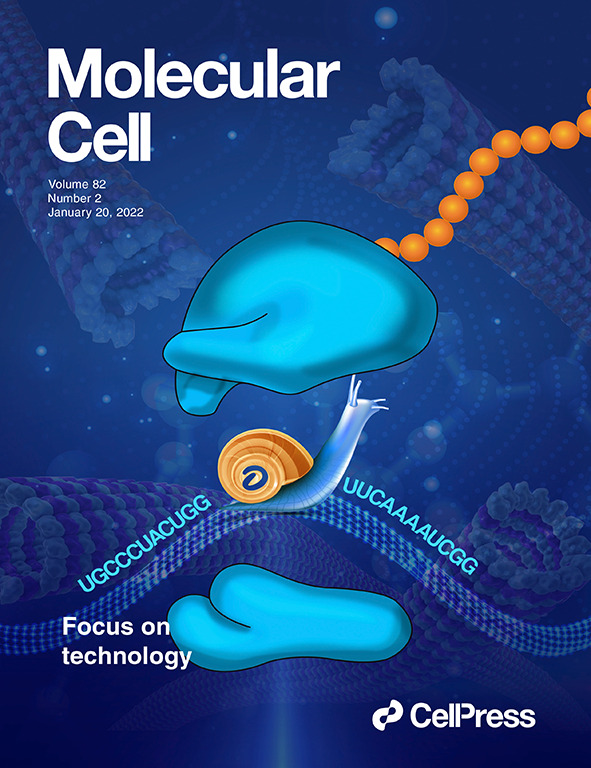STK33 as the functional substrate of miR-454-3p for suppression and apoptosis in neuroblastoma
IF 6.5
3区 生物学
Q2 BIOCHEMISTRY & MOLECULAR BIOLOGY
引用次数: 0
Abstract
miR-454-3p has been reported to be a tumor-suppressive microRNA (miRNA) in multiple cancer types. We identified the kinase STK33 mRNA, which is a high-risk factor for survival in neuroblastoma (NB) patients, as being a substrate of miR-454-3p in NB. Even though STK33 is an attractive target for several cancers, the development of inhibitors of STK33 has been challenging. For the various cell lines tested, we demonstrated reduced growth and viability with the miR-454-3p mimic. From among the candidate NB-associated miRNAs, miR-454-3p mimic and its antagonist had the most profound effect on STK33 mRNA and protein-level changes. Under various conditions of growth and external stress for the cells, the RNA levels for miR-454-3p and STK33 also negatively correlated. Luciferase reporter assays demonstrated STK33 as a substrate for miR-454-3p, and recombinant versions of STK33 resistant to miR-454-3p significantly blunted the suppressive effect of the miR-454-3p and established STK33 as the major functional substrate of miR-454-3p. Overexpression of miR-454-3p or knockdown of STK33 mRNA promoted autophagy and at the same time, increased the apoptotic markers in the tested NB cells, indicating a mechanism for the suppressive effect of the agents. Given the difficult-to-drug targets such as STK33 and the recent successes in RNA delivery methods for cancer treatment, it is thought that targeting cancer cells with a suppressive miRNA such as miR-454-3p for STK33-dependent cancer types may be an alternative means of NB therapy.
STK33 是 miR-454-3p 抑制神经母细胞瘤并使其凋亡的功能底物。
据报道,在多种癌症类型中,miR-454-3p 是一种抑制肿瘤的微 RNA(miRNA)。我们发现激酶 STK33 mRNA 是神经母细胞瘤(NB)患者生存的高危因素,也是 NB 中 miR-454-3p 的底物。尽管 STK33 是几种癌症的诱人靶点,但 STK33 抑制剂的开发一直面临挑战。在测试的各种细胞系中,我们发现 miR-454-3p 模拟物可降低细胞的生长和存活率。在候选的 NB 相关 miRNA 中,miR-454-3p mimic 及其拮抗剂对 STK33 mRNA 和蛋白质水平的变化影响最大。在细胞生长和外部压力的各种条件下,miR-454-3p 和 STK33 的 RNA 水平也呈负相关。荧光素酶报告实验证明 STK33 是 miR-454-3p 的底物,对 miR-454-3p 有抗性的 STK33 重组版本显著削弱了 miR-454-3p 的抑制作用,并确定 STK33 是 miR-454-3p 的主要功能底物。过表达 miR-454-3p 或敲除 STK33 mRNA 可促进自噬,同时增加受试 NB 细胞的凋亡标志物,这表明了这些药物的抑制作用的机制。鉴于 STK33 等药物靶点的难治性,以及近年来 RNA 递送法治疗癌症的成功,人们认为用抑制性 miRNA(如 miR-454-3p)靶向 STK33 依赖性癌症类型的癌细胞可能是治疗 NB 的另一种方法。
本文章由计算机程序翻译,如有差异,请以英文原文为准。
求助全文
约1分钟内获得全文
求助全文
来源期刊

Molecules and Cells
生物-生化与分子生物学
CiteScore
6.60
自引率
10.50%
发文量
83
审稿时长
2.3 months
期刊介绍:
Molecules and Cells is an international on-line open-access journal devoted to the advancement and dissemination of fundamental knowledge in molecular and cellular biology. It was launched in 1990 and ISO abbreviation is "Mol. Cells". Reports on a broad range of topics of general interest to molecular and cell biologists are published. It is published on the last day of each month by the Korean Society for Molecular and Cellular Biology.
 求助内容:
求助内容: 应助结果提醒方式:
应助结果提醒方式:


